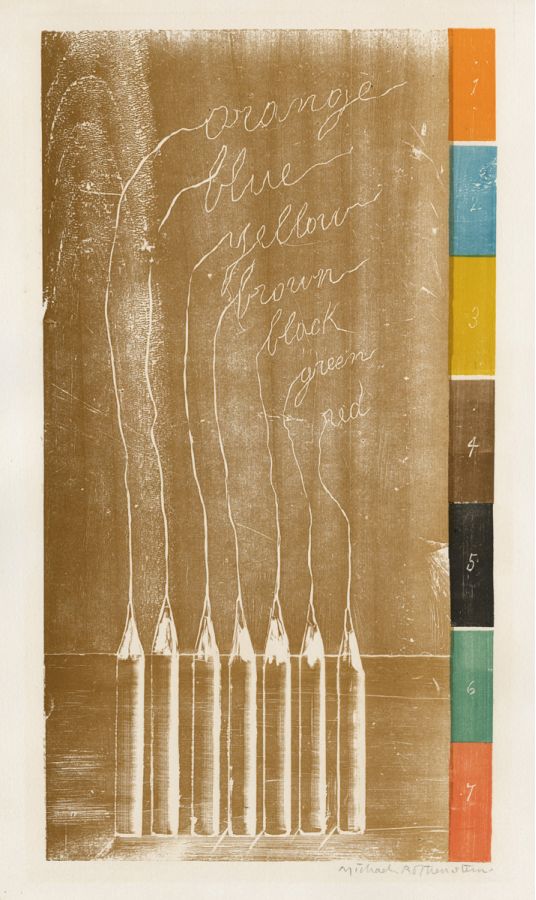Color screenprint and woodcut on wove paper, 1974.
One of 20 artist’s proofs issued loose, aside from the edition of 75.
The edition is a set of three woodcuts with screenprint and linocut, illustrating 'Poems' by Edward Lucie-Smith. Printed by Shelley Rose at Argus Studio.
Published by The Rampant Lion Press, Cambridge, on Barcham Green wove paper. Signed, numbered “19/20”, and annotated “A/P” in pencil.
Image size: 19 1/2 x 10 1/2 inches.
British artist William Michael Rothenstein (1908-1993), chose to go by the name of Michael Rothenstein for an obvious reason: he was the youngest son of the famous portrait painter Sir William Rothenstein. Despite being trained by his father, and then formally at the Chelsea Polytechnic and the Central School of Arts and Craft, he can be said to be a late bloomer. Painting in a Neo-Romantic style in the 1930s and also topographically circa 1940, he increasingly turned his attention to printmaking in the forties and beyond. Under the influence of a community of artists who, like him, settled in Great Bardfield (Essex), painters such as John Aldridge and Edward Bowden, Rothenstein’s esthetic increasingly veered toward simplified lines. By the middle of the 1950s he mostly worked as a printmaker, creating experimental linocuts and woodcuts, which broke with tradition. His compositions at times became nearly completely abstract, or they were forms simplified to the point of being symbols of their subjects. He is known to have spent time working at Atelier 17 alongside Stanley William Hayter in Paris. There is no doubt that some of Rothenstein’s technical inventiveness was aroused in this exciting environment. As one of the main organizers of the Great Bardfield Artists shows, which were hugely popular in the 1950s, his acclaim grew. He taught at a number of art schools, authored well-received books, and was recognized by his peers by becoming a Royal Academician in 1984.



